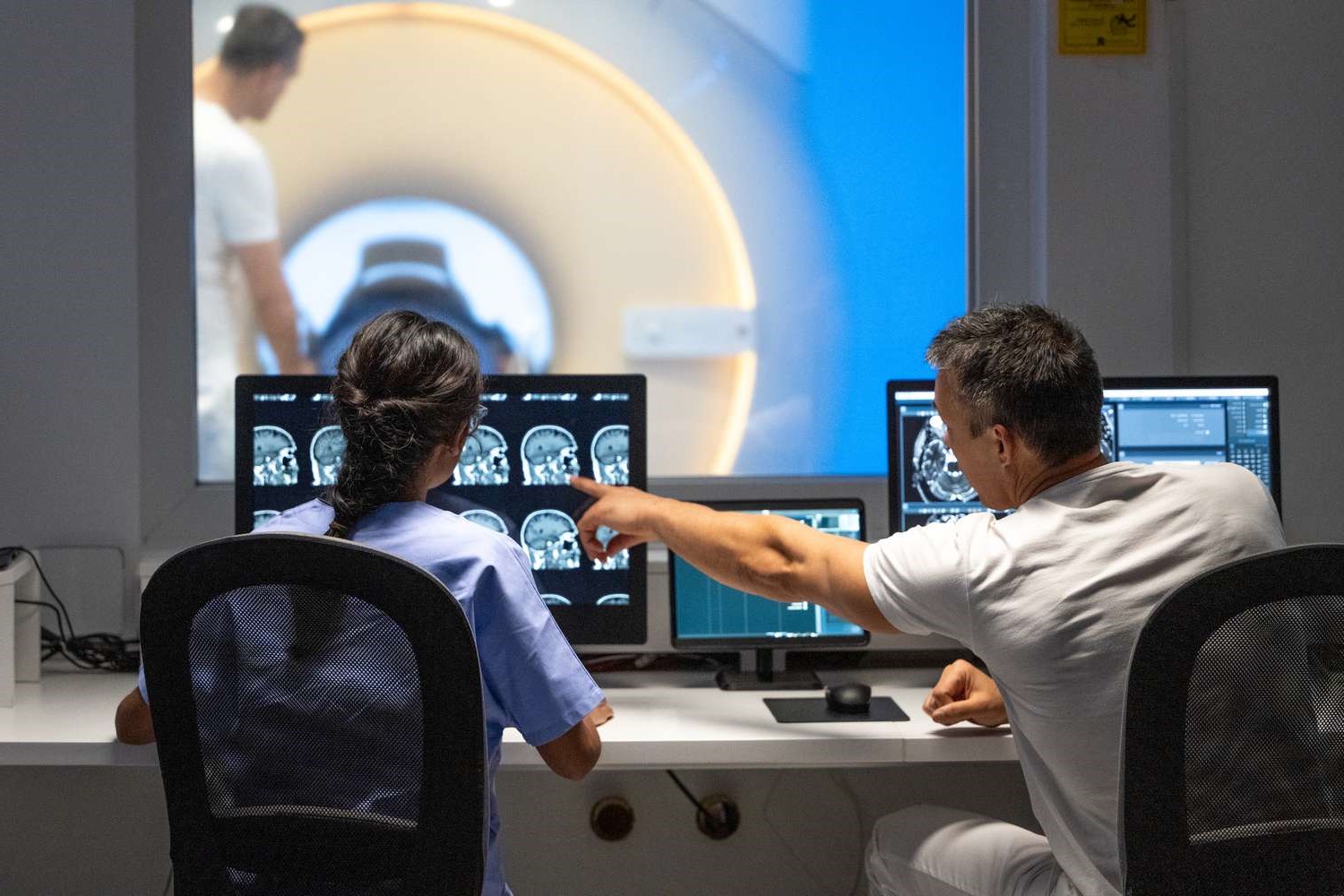
Locked-In Syndrome (LiS) is a rare and severe neurological disorder where a person is fully conscious but unable to move or speak, except for vertical eye movements. Imagine being trapped in your own body, aware of everything around you but unable to interact. This condition often results from damage to the brainstem, particularly the pons, due to strokes, trauma, or other injuries. Despite the profound physical limitations, individuals with LiS retain their cognitive abilities, allowing them to communicate through eye movements and advanced technologies. Understanding LiS is crucial for providing the right care and support to those affected, ensuring they lead meaningful lives despite their challenges.
Key Takeaways:
- Locked-In Syndrome (LiS) leaves individuals fully conscious but unable to move or speak. Advanced technologies like eye-gaze devices and brain-computer interfaces help them communicate and lead meaningful lives.
- Supportive care, advanced communication devices, and social support networks significantly improve the quality of life for individuals with Locked-In Syndrome (LiS). Research continues to explore new technologies and psychological aspects of the condition.
What is Locked-In Syndrome?
Locked-in syndrome (LiS) is a rare and severe neurological disorder. It leaves individuals fully conscious but unable to move or speak. Despite these limitations, they can often communicate using eye movements. Here are some key facts about this condition.
-
Definition and Prevalence: Locked-in syndrome is characterized by paralysis of all voluntary muscles except those controlling vertical eye movements. Its rarity makes exact prevalence hard to determine.
-
Causes: The most common cause is damage to the pons in the brainstem, often due to strokes. Other causes include traumatic brain injuries and various illnesses.
-
Symptoms: People with LiS experience quadriplegia, anarthria (inability to speak), and lower cranial nerve palsy, which affects swallowing and chewing.
-
Types of LiS: There are three main types: Classic (quadriplegia and anarthria with preserved consciousness and vertical eye movement), Incomplete (some voluntary movement), and Total (complete immobility but full consciousness).
Clinical Features and Diagnosis
Understanding the clinical features and how LiS is diagnosed can help in recognizing and managing the condition.
-
Clinical Features: These include quadriplegia, anarthria, preserved consciousness, normal or absent sensation, and abnormal respiratory patterns like Cheyne-Stokes respiration.
-
Diagnosis: Diagnosing LiS is challenging due to the lack of motor responses. It's crucial to rule out other conditions like Guillain-Barre syndrome or myasthenia gravis.
-
Differential Diagnosis: LiS can be mistaken for conditions like akinetic mutism or a vegetative state, especially in individuals with vision or hearing problems.
Communication Methods
Despite severe physical limitations, individuals with LiS can communicate using various technologies and methods.
-
Communication: Eye movements and blinking are primary communication methods. Advanced technologies enhance these capabilities.
-
Head-Mouse Devices: These devices allow patients to move a cursor on a computer using head movements, enabling them to type messages.
-
Eye-Gaze Devices: These track a patient's gaze, allowing them to type on a virtual keyboard or navigate screens.
-
Electromyographic Sensors: Implanted in muscle fibers, these sensors operate switches or move cursors, useful for those with total LiS.
-
Brain-Computer Interfaces: Electrodes implanted in the brain read electrical activity and translate it into words, aiding communication for those with total LiS.
Quality of Life and Support
Living with LiS involves various challenges, but with proper support and technology, individuals can lead meaningful lives.
-
Quality of Life: Proper care, technical aids, and a supportive environment are crucial for maintaining a good quality of life.
-
Supportive Therapy: This includes communication training and helps patients adapt to their condition.
-
Rehabilitation: Focuses on enhancing communication skills and improving interaction with the environment through a multidisciplinary approach.
-
Prognosis: Varies depending on the cause and extent of damage. Advances in technology have improved communication and quality of life for many.
-
Survival Rates: The 10-year survival rate is around 83%, and the 20-year survival rate is approximately 40%.
-
Age and Gender: LiS affects both men and women equally, with most cases occurring between ages 41 and 52.
Challenges and Misdiagnosis
LiS presents unique challenges, including the risk of misdiagnosis and the need for advanced technology to aid communication.
-
Common Causes: Basilar artery occlusion or pontine hemorrhage accounts for about 60% of cases. Other causes include traumatic brain injuries.
-
Misdiagnosis: LiS can be misdiagnosed as a coma or vegetative state due to the lack of motor responses, highlighting the need for thorough diagnostic procedures.
-
Technological Advances: Recent advances have significantly improved the quality of life for individuals with LiS, including advanced communication devices and brain-computer interfaces.
Case Studies and Support Organizations
Real-life experiences and support organizations play a crucial role in understanding and managing LiS.
-
Case Studies: Documented experiences highlight the resilience and adaptability of individuals with LiS, emphasizing the importance of supportive care and technology.
-
French Association of Locked-In Syndrome (ALIS): Created in 1997, this non-profit supports patients with LiS and their families, advocating for better care and understanding.
-
Long-Term Management: Involves ongoing supportive therapy, communication training, and regular medical check-ups to prevent complications.
-
Psychological Impact: Individuals with LiS often face depression, anxiety, and frustration, but many also report resilience and determination.
Social Support and Communication Barriers
Social support and overcoming communication barriers are essential for improving the lives of those with LiS.
-
Social Support: Organizations like ALIS provide a network of support, helping patients and their families cope with the condition.
-
Communication Barriers: Advanced technologies help overcome these barriers, enabling more effective communication and interaction.
Health Complications
LiS can lead to various health complications that require careful management.
-
Respiratory Issues: Abnormal breathing patterns are common, requiring regular monitoring and management.
-
Sensory Loss: Sensory loss, particularly in the limbs, can lead to complications like pressure sores and infections.
-
Facial Paralysis: Affects the ability to make facial expressions and engage in social interactions, but advanced technologies can help.
-
Gastrointestinal Issues: Dysphagia (difficulty swallowing) and dysphagia (difficulty chewing) are common, requiring specialized care to prevent complications.
-
Nutritional Support: Often requires specialized feeding tubes to ensure adequate nutrition, essential for maintaining health.
Rehabilitation and Therapy
Rehabilitation and therapy play a crucial role in managing LiS and improving the quality of life.
-
Physical Therapy: Helps maintain muscle tone, prevent contractures, and improve overall mobility, although mobility is limited.
-
Occupational Therapy: Focuses on adapting daily activities to physical limitations, helping maintain independence.
-
Speech Therapy: Vital for maintaining communication skills through alternative methods like eye-gaze devices or brain-computer interfaces.
Assistive Technologies
Assistive technologies have revolutionized the management of LiS, enabling better communication and independence.
-
Assistive Technologies: Devices like head-mouse and eye-gaze devices enable patients to communicate effectively and perform daily tasks.
-
Head-Mouse Devices in Practice: Widely used, these devices allow patients to interact with computers and communicate through written messages.
-
Eye-Gaze Devices in Practice: Enable patients to type messages on virtual keyboards or navigate screens using their gaze, enhancing communication.
-
Electromyographic Sensors in Practice: Used to operate switches or move cursors, providing additional means of communication and interaction.
-
Brain-Computer Interfaces in Practice: Advanced technology that reads brain activity and translates it into words, particularly useful for those with total LiS.
Quality of Life Studies and Future Research
Research and studies provide valuable insights into improving the quality of life for individuals with LiS.
-
Quality of Life Studies: Highlight the importance of supportive care, technical aids, and a supportive environment in maintaining a good quality of life.
-
Survival Rates Over Time: The 10-year survival rate is around 83%, and the 20-year survival rate is approximately 40%, underscoring the long-term nature of the condition.
-
Psychological Factors: Depression, anxiety, and frustration are common, but many individuals report resilience and determination to live meaningful lives.
-
Social Support Networks: Organizations like ALIS provide a network of support, significantly improving the quality of life for individuals with LiS.
-
Future Research Directions: Focus on exploring new technologies to enhance communication and quality of life, as well as studying the psychological and social aspects of the condition.
The Reality of Locked-In Syndrome
Locked-in syndrome (LiS) is a rare, severe neurological disorder where individuals are fully conscious but unable to move or speak, except for vertical eye movements. Caused mainly by damage to the pons in the brainstem, LiS results in quadriplegia, anarthria, and other significant physical limitations. Despite these challenges, many individuals with LiS maintain their cognitive abilities and can communicate using advanced technologies like eye-gaze devices and brain-computer interfaces. Proper care, supportive therapy, and a strong social network are crucial for improving their quality of life. Misdiagnosis remains a concern, emphasizing the need for thorough diagnostic procedures. While the prognosis varies, ongoing research and technological advancements offer hope for better management and communication for those affected. Understanding and supporting individuals with LiS can make a significant difference in their lives.
Frequently Asked Questions
Was this page helpful?
Our commitment to delivering trustworthy and engaging content is at the heart of what we do. Each fact on our site is contributed by real users like you, bringing a wealth of diverse insights and information. To ensure the highest standards of accuracy and reliability, our dedicated editors meticulously review each submission. This process guarantees that the facts we share are not only fascinating but also credible. Trust in our commitment to quality and authenticity as you explore and learn with us.


